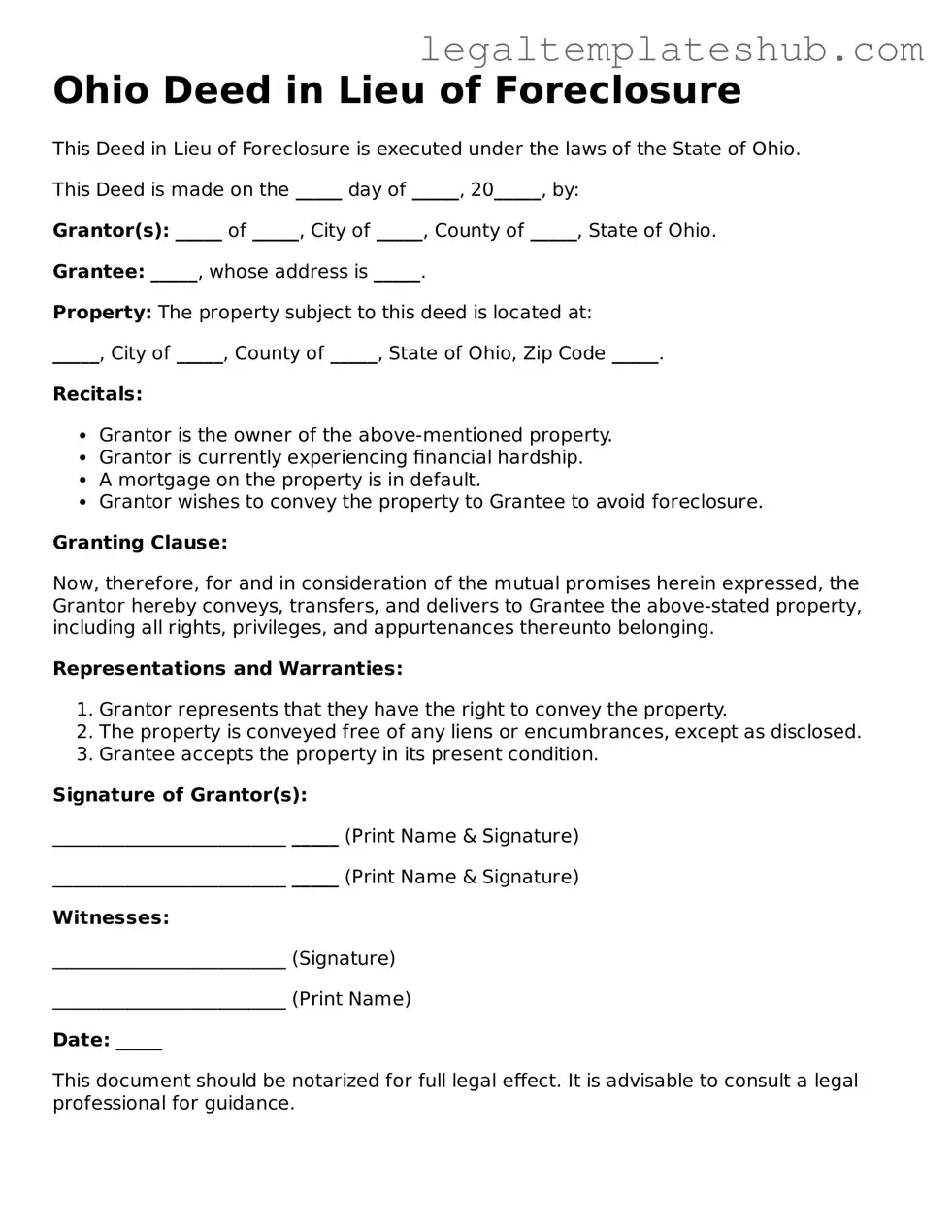Printable Deed in Lieu of Foreclosure Document for Ohio
A Deed in Lieu of Foreclosure is a legal document that allows a homeowner to voluntarily transfer ownership of their property to the lender in order to avoid the foreclosure process. This option can provide a smoother transition for both parties and may help the homeowner mitigate some financial repercussions. If you're considering this option, you can easily fill out the form by clicking the button below.
Access Editor
